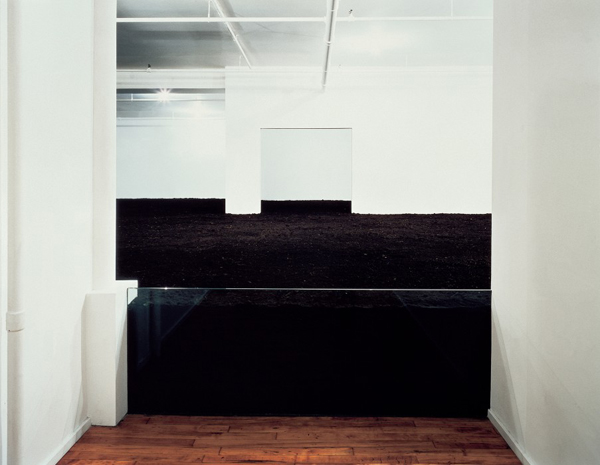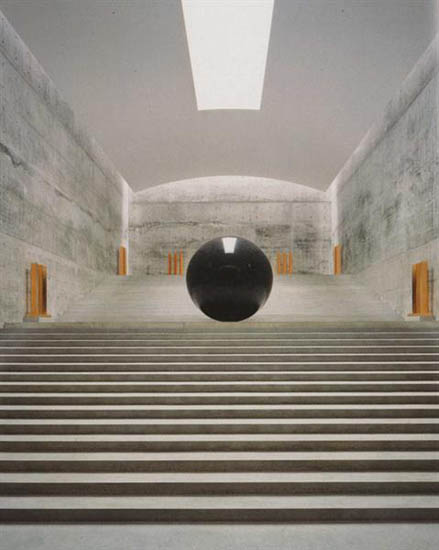The Earth Room, New York City
Ron Morosan
October 2018
 Walter De Maria, The New York Earth Room, 1977.
Walter De Maria, The New York Earth Room, 1977.
© The Estate of Walter De Maria. Photo: John Cliett
The Earth Room, New York City
In today’s global-oriented world, I wonder how many people, when seeing the title “Earth Room,” would assume it is an ecological site with a display of problems and issues concerning our planet. No doubt that is the case with people who are not versed in the New York art scene of the 60’s and 70’s. Even those who took Contemporary Art 101 might not have heard of it or ever visited the site.
This room, filled with rich black soil, was created by Walter De Maria, an artist associated with Conceptual Art, Land Art, and to a lesser extent, claimed by Minimalist Art critics who needed recruits to expand a shrunken idea of art. De Maria is said to have never liked being called a Minimalist or a Conceptualist. But, as with all Modern Art, labeling became a mania, and the compulsion to label art generated a list of isms from Cubism to Energism and Late-Pop Populism that seems to be the current entropic state art has reached today.
Located at 141 Wooster Street will be found a 3600 square foot space with 250 yards of soil two feet deep and cared for on a daily basis by Bill Dilworth, an artist and enthusiastic caretaker of De Maria’s installation. This is no small feat. The earth needs to be kept moist and raked weekly to prevent mold and to keep organic material from growing there. It requires a particular condition to be maintained. In a sense it is an art conservation process that is always in process.
The saga of the Earth Room’s development revolves around the former art dealer Heiner Friedrich. He first commissioned the Earth Room for his Munich gallery 1968. In 1977 it was recreated in his New York gallery. It was publicly opened at its current location in 1980 under the auspices of the DIA foundation. Then he commissioned another permanent art work from De Maria, the “Broken Kilometer,” which is located a couple of blocks away at 393 West Broadway.
Last year the Earth Room turned forty years old. This is a very significant milestone because it is contracted to remain on exhibit indefinitely- in perpetuity, or permanent. In today’s transient art world of “What’s next” this is a bold and even defiant idea.
Talking with Bill Dilworth, who has been attending to the installation for twenty eight years, he described how attendance has changed: “ Fifteen years ago, there would be maybe five or ten people who would come in per day. But now that number of people would come in one hour.” No doubt, quite a change. We both speculated that new tourist guides have appeared with online sites to highlight ongoing installations where the need to keep track of dates is not needed. The Earth Room will always be there, but closed in the summer after June 20th and reopening in September.
 Bill Dilworth, Marks of Days Books: Counting People in a Day
Bill Dilworth, Marks of Days Books: Counting People in a Day
9/27/2018- 67 people
Bill has developed a self-styled “Book of Hours,” literally books that he fills with his calligraphic marks that sometimes resemble Asian script but could also be an Automatic Writing style. Stacks of these books were piled on the shelf to the left of the reception desk.
Bill is performing a curatorial/ conservator role that is reminiscent of the first manifestation of this concept in the early Roman Empire. The curator was caretaker of a collection and looked after its condition and maintenance. (Odd that an advanced work labeled Conceptual Art has an ancient concept of caretaker to go with it.)
Spending a long time observing the Earth Room brings out many anomalies and contradictions: first of all there are two rooms in the space. The second one fills the right hand side and proceeds all the way to the front window, blocking the viewer from seeing the earth contents. Then there is the opening in the other room which is almost a mirror of the one where the viewer stands, being six inches narrower but of the same height. Front and back windows throw a gentle light over the moist earth and give it a romantic and somewhat mystical feeling, as if we are looking at hallowed ground.
Jane McFadden, in her lecture at the Dia Beacon during a retrospective of De Maria’s work in January of 2017, stated: “De Maria liked to see a work that has ten things going on all at once.” She also said, “He was a believer in a higher role for art.” This certainly doesn’t sound Minimal or Conceptual.
After 40 years the Earth Room is beginning to emote something that can only be described as “spiritual,” but if not that, then something that invites an idea of the infinite or the metaphysical.
 Walter De Maria, Time/ Timeless/No Time, 2004
Walter De Maria, Time/ Timeless/No Time, 2004
The title of De Maria’s work at the Chichu Art Museum designed by Tadao Ando and located on the Seto Island off the coast of Japan is “Time/ Timeless/No Time,” features an enormous perfect sphere 2.2 meters in diameter sitting on a high stepped alter-like stage with 27 geometric gold leafed vertical panels on the concrete walls around it and clearly invites an etherical reading. Is this an Earth Altar? Is it a site for global meditation? A Gaia monument? This work takes the Conceptual idea as far as it can go toward merging with a metaphysical spirituality.
The Chichu site also features large works by James Turrell and Claude Monet and that is the entire museum. The three artists constitute a collective statement of a serenity with nature and earth, and that theme is carried out on the entire island preserve. Comparing De Maria’s Chichu installation to the New York Earth Room confirms a spiritual dimension to De Maria’s installations that puts his work in a category all its own. It strongly suggests that De Maria was motivated by a personal vision centered around his own subjective concept of spirituality.
Yet, the Earth Room is filled with implications and ideas. We can reference cultural histories and point to traditions practiced by European immigrants who came to the United States early on in its history and brought with them small samples of their home soil to make them feel connected to their original home. Its forty year history, now forty first, is a kind of defiant stance against the fast pace of the world around it. In this sense it is the most slow of the slow arts, a mass of earth that is like a poem to the good earth and to the planet earth.
May it continue.
◊
Ron Morosan is an artist, writer, and curator. He has shown his work internationally at the American Pavilion of The Venice Biennale and the Circulo De Bellas Artes in Madrid, Spain. In the US he has shown at the New Museum and had a one-person exhibition at the New Jersey State Museum, and at numerous galleries in New York. He curated the Robert Dowd exhibiton, Subversive Pop, at Center Galleries in Detroit, as well as Denotation, Connotation, Implication at Eisner Gallery, City University of New York. He has written catalogues for many artists, including Enid Sanford, Tom Parish, Robert Dowd, and others. In the 1990’s he started and ran B4A Gallery in Soho, New York, writing press releases, articles, and catalogues.
Read other articles by Ron Morosan on Arteidolia
